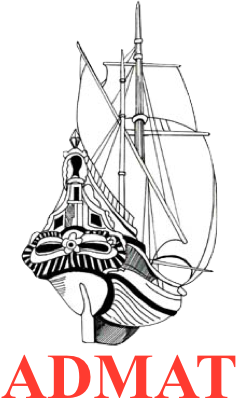There’s a peculiar feeling, being submerged in a moment of history completely frozen in time. I remember hand fanning the silt from a row of wooden futtocks on the side of the wreck and glancing over my shoulder at a 300 year old cannon lying beside me. Suddenly something clicked inside me and I realized this wasn’t just something you saw in the movies… I was actually working on a real live shipwreck!
Cannon Two, a 9pdr iron Carron cannon which had been uncovered by the earlier storms, covered with marine algae above the bow
Easily distinguished from the ivory Caribbean sands in the ocean, the “Le Dragon” wreck protrudes from the shallow reefs like a broken gangplank. Most prominent is the ballast pile, a mountain of small stones responsible for the ship’s weight balance that stretches over the wreck. Second are the formidable 9 pounders Carron iron cannons on the surrounding seabed. These cannons were instrumental to the ship during the long investigation through the archives before it was finally discovered as ‘Le Dragon”.
Despite the fact half of the ship was blown up in Captain L’Espine’s valiant attempt to save the spy onboard and the secret orders from the King of France, and that the worms had greedily eaten through most of the deck, the bottom floors and futtocks remain remarkably intact. The sratboard and port sides had been uncovered by a past storm which saved the Team a lot of time uncovering it. We had to clean off the algie growth which revealed some of the remaining lower hull assembly. This not only gave us a clear perspective of the port and starboard sides of the ship, but also enabled us to track the keel through the middle of the ship.
The lower ballast amidships, just before the shot locker and main mast
Days 5 & 7, we began the initial excavation of “Le Dragon”. After locking in our first survey grid to the north of the amidships, break we began hand fanning the squares and probing the seagrass encroached area for any finds. Despite the fact progress was slow; the search yielded two interesting finds - a lead box just off the survey grid and pulley wheel that could still rotate was located near the bow section!
The wooden pulley wheel and spindle missing the outer wooden casing of the block, located on the starboard side of the wreck
Meanwhile, off the starboard side, the metal detectors and gradiometer were utilized to pinpoint numerous hits of ferrous and nonferrous metals. Marking these hotspots with coloured flags, we were able to visualize possible artefact locations buried beneath the sand.
The ships stone ballast which had been swept off the hull in the storm and because the deck is tilting 20 drgrees down on the starboard side
Of course, the biggest job was installing the dredge and starting the process of locating the bow (front) of the ship. While we had a good idea of where it was from the 2000 operation, we hoped by uncovering it again we could establish a reference point to aid our renewed excavation. Unfortunately, after sucking through the first few layers of sand we stumbled upon a massive log that had settled over our target area. This caused us to change position, but further down we encountered another obstacle… a local Dominican fishing boat that had sunk right on top of the bow! As frustrating as this was, we couldn’t help but laugh at the fact we now had two shipwrecks pancaked on top of each other.
This also proved the golden rule of maritime archaeology... that Murphy’s Law reigns supreme. Anything that can happen will happen - so don’t ever be surprised.




